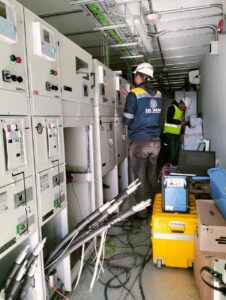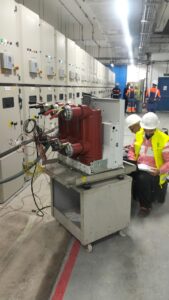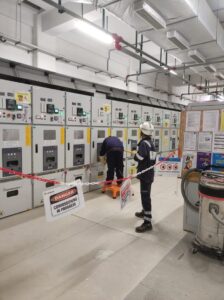Introduction
Calcium difluoride (CaF₂), commonly known as fluorite or fluorspar, is a naturally occurring mineral that is a primary source of fluorine. It plays a crucial role in various industries such as metallurgy, glassmaking, ceramics, and optics. In recent years, sustainability has become a significant concern in the mining, processing, and utilization of calcium difluoride, as industries strive to reduce environmental impact and adopt more sustainable practices.
This article examines the sustainability of calcium difluoride by exploring its mining process, environmental impact, recycling potential, and its role in creating environmentally friendly technologies.
1. Mining and Extraction of Calcium Difluoride
Fluorite, or calcium difluoride, is primarily mined from natural deposits found in various regions around the world, including China, Mexico, and South Africa. The extraction process involves traditional mining techniques, such as open-pit and underground mining.
- Challenges in Mining: The mining of fluorite presents several environmental challenges, including habitat destruction, groundwater contamination, and significant energy consumption. However, companies are working towards mitigating these effects through more sustainable mining practices, including:
- Land Rehabilitation: Efforts to restore and rehabilitate mining sites after operations cease, ensuring that the land can be reused or reverted to its natural state.
- Water Management: Implementation of water recycling technologies to minimize contamination and reduce water usage.
- Energy Efficiency: Reducing energy consumption by adopting more energy-efficient machinery and renewable energy sources to power mining operations.
2. Uses of Calcium Difluoride and Environmental Impact
Calcium difluoride is used across various industries, each with its own environmental impact. A primary use of CaF₂ is as a flux in steelmaking and aluminum production, where it reduces the melting point of raw materials, improving energy efficiency. It is also an essential component in the production of hydrofluoric acid (HF), which is used in chemical synthesis and the semiconductor industry.
- Environmental Considerations:
- Energy Consumption: The energy required to mine and process calcium difluoride, particularly in steelmaking, contributes to carbon emissions. More efficient processes and alternative energy sources are being explored to reduce the carbon footprint.
- Fluorine Emissions: Fluorine compounds released during the production of hydrofluoric acid can be harmful to the environment if not properly managed. Stringent regulations and modern emission control systems are critical to minimizing these effects.
3. Calcium Difluoride in Green Technologies
Calcium difluoride plays a pivotal role in developing environmentally friendly technologies. One such application is its use in optics, where high-purity CaF₂ crystals are used in lenses and windows for ultraviolet and infrared spectroscopy. These materials are vital for technologies that monitor environmental pollution and greenhouse gas emissions.
- Solar Energy: CaF₂ is also finding applications in photovoltaic systems. Fluorine-based materials, derived from calcium difluoride, are used in anti-reflective coatings for solar panels, enhancing their efficiency and contributing to the growth of clean energy.
- Low-Emission Manufacturing: Fluorite’s role in metallurgy, particularly in reducing the melting point of metals, helps reduce the energy required in production processes, indirectly reducing the environmental impact of manufacturing industries.
4. Recycling and Reuse of Calcium Difluoride
Although recycling calcium difluoride itself is not common, industries that use it are adopting more sustainable approaches. For example, in the steel and aluminum industries, the focus has shifted towards reducing waste and reusing materials to decrease the need for virgin raw materials.
- Waste Management: Industries are improving waste management practices by recovering and reprocessing by-products, including calcium fluoride sludge, which can be purified and reused.
- Recycling of Fluorine Compounds: The recycling of fluorine-containing compounds, including hydrofluoric acid (HF), plays a role in reducing the demand for raw calcium difluoride and lowering environmental impact.
5. Regulatory and Environmental Compliance
Governments and international organizations are increasingly regulating the mining and processing of calcium difluoride due to its environmental impact. Regulations are designed to limit emissions, ensure sustainable mining practices, and encourage recycling where possible.
- Environmental Regulations: Compliance with environmental standards, such as the European Union’s REACH (Registration, Evaluation, Authorization, and Restriction of Chemicals) regulation, ensures that fluorine-based products are handled in ways that minimize risks to both people and the environment.
- Sustainable Certifications: Companies in the mining sector are increasingly seeking certifications that demonstrate commitment to sustainability, such as ISO 14001 for environmental management systems, encouraging responsible extraction and production practices.
Conclusion
Sustainability in the calcium difluoride industry is a growing focus, with increased efforts to reduce the environmental impact of mining and processing. Advances in recycling, energy-efficient practices, and the role of CaF₂ in green technologies are contributing to a more sustainable future for this essential mineral. As industries continue to evolve, ongoing innovation and regulation will be key to ensuring that calcium difluoride is used responsibly and efficiently, with minimal environmental harm.
The path towards sustainability in the calcium difluoride industry is clear, with a promising outlook for reducing emissions, enhancing energy efficiency, and contributing to the development of green technologies like solar energy and environmental monitoring systems. By adopting sustainable practices, the industry can continue to supply critical materials while protecting the environment for future generations.





